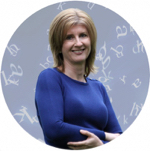by Pauline Wiles
Around five years ago, Marie Kondo became a household name with her now famous clutter purging guide, The Life-Changing Magic of Tidying Up.
With 4 million copies sold worldwide, many of us embraced her philosophy and methods for our homes. As a writer, there’s a good chance you’re conscious of keeping a tidy work space, too.
But have you thought of applying this decluttering approach to your online home?
“A website is a window through which your business says hello to the world.” – Amit Kalantri
I spend a lot of time reviewing & improving writer websites. Many writers and authors have sites they set up several years ago, and it shows. Alongside dated designs and the digital equivalent of faded photographs, clutter is another key sign that a website needs a refresh. Ms. Kondo, I believe, would not be impressed by the extraneous information, banners, links, badges, and distractions which lurk on many writer websites.
Why Is Clutter so Detrimental?
Design sensibilities aside, too much information confuses your reader and dilutes your message. Research shows that when we’re given too many choices, we tend to make no decision at all. Too much content can be overwhelming for you to maintain, and introduces more opportunities for inconsistencies, mixed messages, and broken links. And you probably know that if your website is more than a few years old, the chances are strong that it looks awful on a mobile device.
So, if you currently have a website, consider removing clutter from your sidebar, footer, menus and header. Get rid of pages which no longer serve a strong purpose. Clean up your multitude of links, especially those to social media accounts you never use. (Hint: Google Plus no longer exists!) And please rethink whether the pennies you make from adverts are worth the chaotic experience your visitor endures.
This online housekeeping isn’t just a pleasant way of procrastinating when you should be writing: it makes good commercial sense. A Stanford University study found 75% of consumers admit they judge the credibility of a business based on its website design… and you have just 50 milliseconds to make a good first impression.
Thinking of Starting from Scratch?
If you don’t yet have a website, or you want to abandon the one you have & start again, your best strategy is to keep it far simpler than you might imagine.
Firstly, this boosts the probability that your website is effective at promoting your work and engaging your readers. And even better, it greatly improves the chances you’ll actually complete your website project:
When starting from scratch, the smart approach is to decide on the key action you’d like a website visitor to take. This might be to buy a book, sign up for your mailing list, or, if you offer writing services, schedule a consultation. Be choosy here: don’t try to offer a little of everything, and instead design your site so this one key action stands out as their natural next step.
Then, think about the frequently asked questions or types of information your website visitor is trying to find, or that you especially want them to see. From here, plan just a handful of pages so they can locate this information easily, and trust that when adding content, less is more.
* * *
 Pauline Wiles is a website designer who builds a simple, stylish online presence for authors and writers. As an author herself, she noticed others were often overwhelmed by this task.
Pauline Wiles is a website designer who builds a simple, stylish online presence for authors and writers. As an author herself, she noticed others were often overwhelmed by this task.
Now, she’s on a mission not only to create beautiful and impactful writer websites, but also to dispel some of the myths around how difficult a web project should be. She aims to show her students that launching a website can be easier, more affordable, and more fun than they ever imagined.
For more information on Pauline and her work, please see her website, or connect with her on Facebook and Twitter.


Thank you for sharing these tips with your readers, Colleen. I’m excited for the course and look forward to welcoming some writers to the first beta tester group!
Thank you, Pauline. Appreciate your tips on websites for writers. :O)